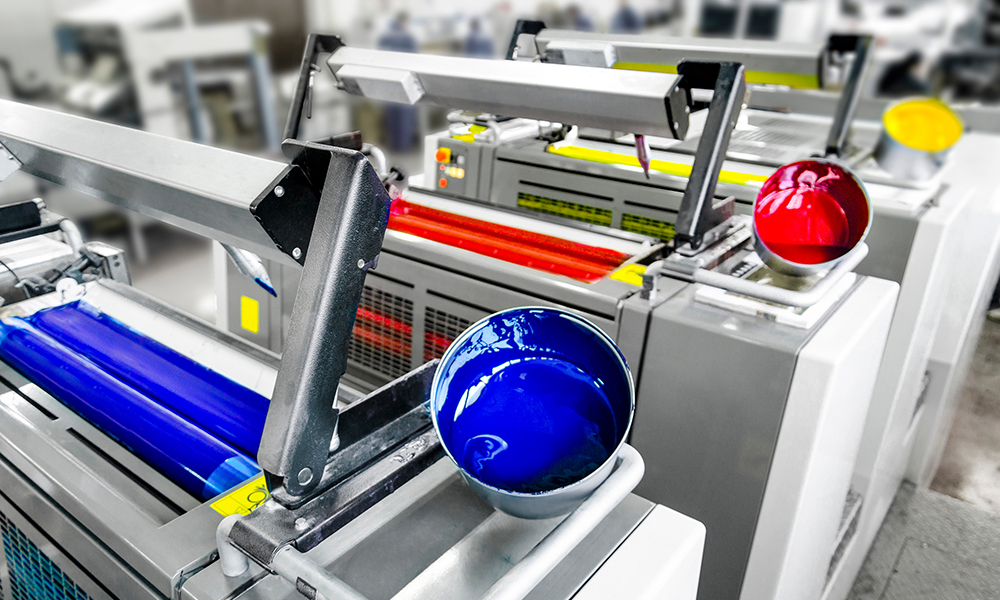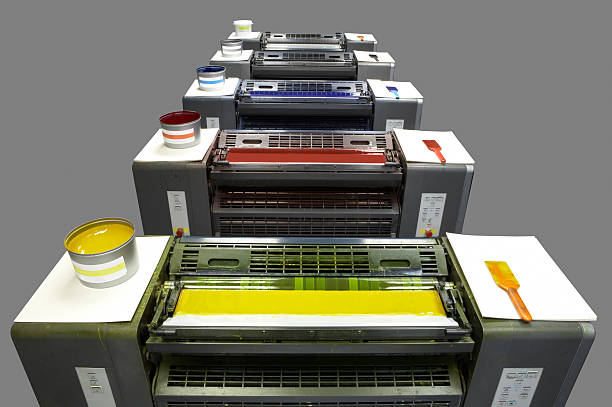litho printing Techniques Used by Top Print Shops
litho printing Techniques Used by Top Print Shops
Blog Article
A Comprehensive Overview to Comprehending Litho Printing Techniques
The globe of litho printing, a method originating from the late 18th century, is a fascinating mix of history, art, science and innovation. This comprehensive overview will certainly unravel the intricacies of this printing method, from the structure of litho inks to the challenges faced in contemporary applications. As we venture into the ins and outs of lithography, the importance of automation and sustainability in ensuring its future importance comes to be progressively clear. Keep with us as we journey right into the exciting realm of litho printing.
The Historical Evolution of Litho Printing
The historic trajectory of litho printing, a critical technology in the world of interaction, is a captivating tale of human resourcefulness. Birthed in the late 18th century by Alois Senefelder, this strategy was at first an affordable technique of releasing theatrical works. Lithography, originated from the Greek words for 'rock' and 'to write', utilized a smooth stone surface to move pictures onto paper. The procedure progressed with the advent of the rotating press, which greatly raised productivity (litho printing). In the 20th century, the advancement of countered lithography changed the sector, permitting automation of top quality prints. Each phase of litho printing's evolution showcases humanity's ruthless search of effectiveness and top quality in visual interaction.
Translating the Scientific Research Behind Litho Printing Inks
Progressing in the expedition of litho printing methods, the focus currently shifts to the science behind litho printing inks. The composition of these inks, their drying out procedure, and color mixing techniques create the foundation of this complicated art kind. Understanding these elements is important to grasping the craft and achieving the wanted print outcomes.
Make-up of Litho Inks
In lithographic printing, the basic duty of litho inks can not be overemphasized. The make-up of litho inks differs depending on its objective, however typically, they are composed of two major elements - cars and pigments. Pigments, the color-providing components, are finely ground fragments suspended in the automobile, a fluid that lugs the pigment onto the printing surface area. The car is a complex mixture of solvents, oils, and resins, which influence the ink's drying time, attachment, and gloss. In addition, different additives exist to boost particular properties like circulation, drying, and resistance to environmental effects. Each component plays an important part in the last print's quality, making the specific formulation of litho inks a detailed science.
Ink Drying Process
From the make-up of litho inks, interest turns to the remarkable procedure of ink drying out. The drying process is important, as it influences the final print's top quality and long life. Two main techniques are utilized in litho printing: oxidative drying and absorption. Oxidative drying out involves the ink responding with oxygen airborne to create a tough, completely dry film. This technique gives a durable finish, but can be slower compared to absorption. Absorption, on the various other hand, entails the ink permeating right into the paper fibers, which is a quicker process however can result in less vibrant shades. The choice in between these techniques depends on variables such as print speed needs, the paper type utilized, and the desired finish.
Shade Mixing Techniques
While the drying out procedure plays an essential role in litho printing, the scientific research of color mixing strategies holds equivalent significance. This is a complex procedure that includes the cautious mixing of primaries: cyan, magenta, and yellow, in differing proportions to achieve a vast range of hues. The enhancement of black ink, known as 'crucial', assists in regulating the strength and depth of the colors. The science behind litho printing inks additionally considers the openness of the ink, which impacts just how colors overlay and mix. To accomplish an effective color mix, print professionals have to also recognize the details of ink habits, shade theory, and the physical homes of the substrate on which the ink is used.
The Art and Style Aspects in Litho Printing
Litho printing takes a breath life into art and design with its one-of-a-kind aspects. The procedure involves producing an image on a lithographic sedimentary rock plate or steel plate with a smooth surface. The picture is after that published onto a tool, normally paper, by moving the ink from home plate. What sets litho printing apart is its capability to reproduce intricate designs with high fidelity, making the outcome nearly the same to the original artwork. This is attained with the usage of different line methods such as cross-hatching, stippling, and hatching, which enable a series of tonal impacts. Furthermore, litho printing accommodates a variety of colors, making it possible for artists to produce dynamic and vibrant prints. This combination of precision and adaptability makes litho printing a preferred choice for many Continue artists and developers.
Modern Applications of Litho Printing Strategies
Litho printing techniques have actually located comprehensive usage in the modern commercial field. Its influence and importance proceed to grow with the advent of new developments and technologies in the field. This area will discover these contemporary applications and the transformative function they play in the printing sector.
Industrial Litho Printing Uses
In today's electronic go to my site age, one could question concerning the relevance of typical printing methods. Litho printing stays a crucial part of the business field. High-volume printing jobs, such as the production of publications, papers, and packaging, rely upon litho printing for its capacity to provide superior image high quality and price performance. The process, which entails transferring an inked photo from a plate onto a rubber blanket and after that to the printing surface, uses unparalleled consistency. This makes it optimal for tasks calling for a huge print run. Litho printing also provides a broad color range, above that of electronic printing. This makes it the best choice for projects that require vibrant, premium shade recreation.
Technologies in Litho Printing
Pressing the boundaries of typical strategies, contemporary advancements have sustained a host of developments in litho printing. One noticeable growth is digital litho printing, which integrates the merits of digital innovation with litho's high-quality outcome. These innovations highlight the long-lasting importance of litho printing in the modern world.
Exploring the Refine of Litho Printing: Detailed

Difficulties and Solutions in Contemporary Litho Printing

Despite the precision and tradition that litho printing proudly upholds, it is not without its set of contemporary challenges. Digital litho printing permits for cost-efficient short runs and very easy modification, addressing the concern of variable information. Therefore, while there are difficulties, the litho printing industry is proactively adjusting to meet them head-on, ensuring its importance in the future.
Final thought
To conclude, litho printing, with its abundant history and clinical complexities, holds a substantial location in the print market. As the overview reveals, it's a synthesis of art and modern technology, with contemporary innovations ensuring its relevance. However, the sector deals with difficulties that require cutting-edge options, with an emphasis on automation and sustainability. The future of litho printing rests on its capability to adjust to these changing demands, verifying its long-lasting value in an advancing market.

Report this page